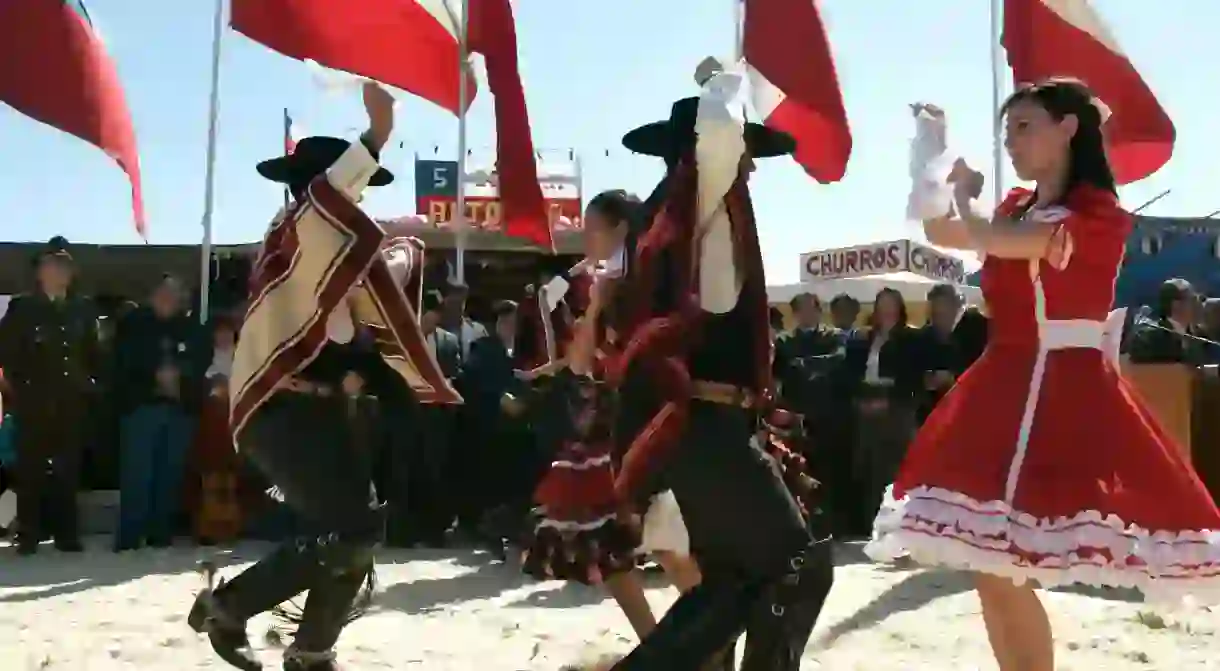An Introduction to Chilean Traditional Dress

From Chilean cowboy duds to the indigenous Mapuche dress, Chile’s clothing traditions have strong roots in the countryside and rural culture. Put on a poncho and saddle up for this lesson in traditional Chilean dress.

Traditional huaso clothing
A huaso is essentially a Chilean cowboy. Although Chile’s rural areas are modernizing rapidly, you can still see traditional huaso style, especially the poncho, all across the country. Even city folk put on their huaso gear during the national holiday Fiestas Patrias, when Chileans gather in celebration to stuff themselves on barbecue, drink the traditional terremoto drink and dance the cueca.
Chuppalla
The chupalla is essential to Chilean huaso dress. The straw horseman’s hat is typically worn by Chilean men. The chupalla can be seen in traditional parts of rural Chile and it’s often worn during the cueca dance. The hats used to be made out of the bromelia plant, or ‘achupalla‘, which is where the it gets its name.
Poncho
The poncho is another traditional element of Chilean huaso style. Though ponchos are worn all around Latin America, especially in Argentina, Chile and Peru, in Chile locals often wear the chamanto, a reversible poncho, made from either wool or silk with a ribbon finish. Traditionally, Chilean festive ponchos incorporate colors like grey, brown, red, black and white.

The huasa or cueca dress
The most important traditional Chilean clothing for women is the vestido de huasa, or the huasa dress, which is usually worn for cueca dancing. With the huasa or cueca dress, the silhouette is key. (Think rockabilly Chilean cowgirl.) Though there are many styles of traditional dresses, all are characterized by a tight, cinched-in waist and a wide, full skirt which falls just below the knees. Many dresses include a sash around the waist and incorporate a floral pattern. Although these huasa or cueca dresses can be any color, you often see them in red, blue or white, the colors of the Chilean flag. In addition to this traditional dress, there’s also a more elegant huasa dress, usually for older women, which features a long, black skirt that fits close on the legs, hitting the ankles and includes a red sash and a bolero jacket.
Traditional Mapuche clothing
The indigenous Mapuche people make up Chile’s largest indigenous group and a majority of Chileans claim some Mapuche ancestry. Though many of the Mapuche’s traditions have been lost after centuries of Spanish and Chilean influence, there are still elements of Mapuche dress you can see in Chile today, especially in the southern regions, the ancestral land of the Mapuche.

Mapuche jewelry
One of the most widely-recognized aspects of traditional Mapuche dress is the Trarilongko, which is the silver head ornament worn by Mapuche women. Traditionally, Mapuche women also wore chaguay, silver earrings which you can find at artisan markets in Santiago and Temuco. Also notable are the stunning akucha lapel pins, which include a top and bottom plate held together by three silver chains and are worn on a Mapuche woman’s chest.
Mapuche textiles
Like many South American indigenous groups, the Mapuche have a rich tradition of textile work. Archeologists have found patterned Mapuche fabrics dating back to between AD 1300-1350. Mapuche women were in charge of spinning and weaving wool textiles, a practice that, though not widespread, continues today. Mapuche textiles include the poncho, which has a pattern distinct from the ponchos you see on Chilean huasos and the chamal, a square blanket. Mapuche textiles often incorporate the guemil, an iconic, crisscross pattern in Mapuche culture.
Check out these tours of Chile.













